
The devil is in the details. This is one of the truest statements you’ll ever here in regard to Brazilian Jiu-Jitsu. Speak of the devil, heel hooks are still the most notorious move in BJJ, despite all efforts to the contrary. Still, for those brave enough to accept them as just another powerful and reliable submission, they are a great grappling tool. There’s hardly a better lower body submission than a heel hook. SO far, positions for hunting heel hooks, as well as heel hook types have bee beaten to death. Yet, one very important aspect of heel hooking seems to go by unnoticed. Today, we’ll try to shed some light on the grips you need to finish a heel hook on anyone under any circumstances.
As I go deeper into the world of grappling I definitely realize the importance of the small things in Jiu-Jitsu. There are plenty of things we take for granted at the beginning. Grips are high on the list of important things that people only address when they’re more advanced. Grips area actually the essential part of any BJJ exchange. They allow a connection, control, attacking or defensive actions and execution of submission holds. To that extent, most BJJ techniques have more than one grip position. Furthermore, grip positions tend to have a hierarchy, where some work a lot better than others. Heel hooks are no different and with a solid understanding of grips, you’re finishing rate is going to skyrocket.
The heel hook is a great submission to have in your toolbox, regardless if you’re training in the Gi or No-Gi. Heel hooks are very high percentage of submissions that have their place in BJJ. There’s no need to outlaw them for fear of injury if training and teaching are approached correctly.
Heel Hooks Overview
The heel hook is a twisting submission that puts your whole leg under tremendous pressure. It works much as a wrench does. The basic principle is one of leverage. You use the ankle joint as the wrench to a strong elicit twisting motion of the knee. The force from the trapped ankle joint travels along the shin, multiplying as it reaches the knee joint. The control over the ankle, as the name suggests, comes from “hooking” the heel. Damage occurs in different ligaments of the knee, depending on the variation.
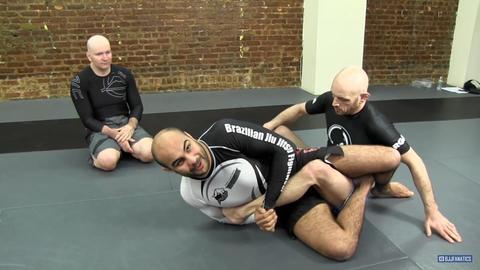
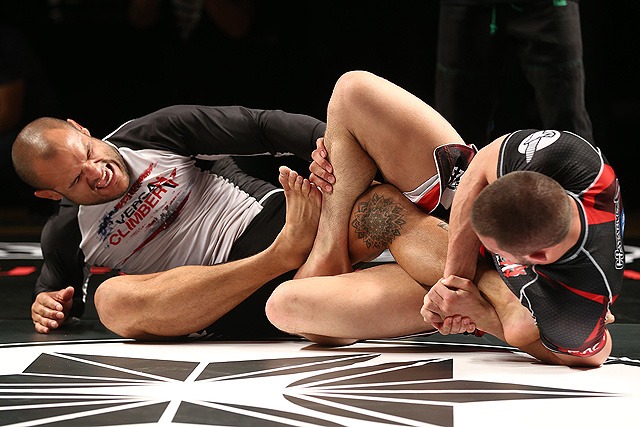
Grip Hierarchy
Even if you get everything right with positioning and placing the opponent’s foot between your elbow crease and armpit, you won’t get a submission unless you connect your hands. For heel hooks, there are three basic grip positions that pretty much guarantee you’ll get a tap.
The basic idea behind connecting your arms is to create a closed circuit situation where the foot can’t slip out. Furthermore, the arms help reinforce each other in a position of control. This means that even if you lack in hip control, your grip is going to allow you to stay connected until you adjust your overall position. Even if an opponent rolls, you can easily follow and decide where to finish the submission. While not something to be encouraged, you could also use grip variations to ensure a last-ditch tap when an opponent is already slipping out of both position and submission.
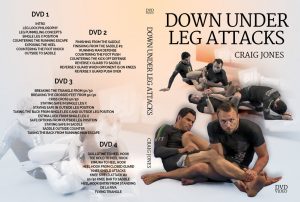
There’s one more aspect of grip placement for heel hooks you have to consider. Usually, when opponent’s see that they can’t beat your Ashi Garami, they’ll focus all their attention on grip fighting. While grip fighting is not the subject today, maintaining grips can spare you a lot of time and effort. A well-placed grip is going to be immensely difficult to break, especially those higher up the hierarchy.
Palm To Palm Grip
The most basic grip people usually associate with heel hooks is the palm to palm grip. Suffice to say, all grips we’ll cover today work on both the outside and inside heel hook. With the palm to a palm grip, the goal is to use the sharp part of your wrist, right below your thumb, to create a sort of a platform for the opponent’s heel. The bony part of this wrist area needs to come under the heel and prop it upwards towards your ribs. It also acts as a wedge to keep the foot stuck along with your armpit squeezing on the toes.

Butterfly Grip
The palm to palm grip is the first grip in the first one in the heel hooks gripping hierarchy. It is very effective and the easiest one to obtain. However, it is the least secure of all the grips and certainly not the tightest one. Second, on the ladder is the butterfly grip. it is essentially an extension of the palm to a palm grip, one that offers much more control and tension.
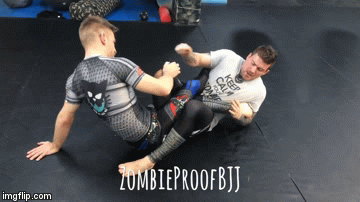
Reverse Butterfly Grip
The reverse butterfly grip is the ultimate heel hook finishing grip. Pair it with an inside heel hook attack form the 4/11 and you have an all but certain tap. The reverse butterfly grip in not only the tightest and deepest one, but it is also the most secure one. There’s no way of breaking this grip before a heel hook comes on.
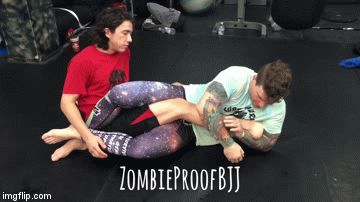
This one is the ultimate inescapable heel hook grip. Make sure you exercise real caution with it as it takes only the slightest of pressure to cause a major injury.
https://bjj-world.com/leg-locks-ultimate-guide-positions-submissions/


![Darce Choke Encyclopedia – Origins, Mechanics and Variations [2025] BJJ, choke, Brabo, BJJ Darce Choke, D'arce Choke, Darce BJJ Choke](https://bjj-world.com/wp-content/uploads/2017/11/JungPoirierLeeYahoo-218x150.jpg)









![Get Off My Legs Gringo Craig Jones DVD Review [2025] Get Off My Legs Gringo Craig Jones DVD Review](https://bjj-world.com/wp-content/uploads/2025/03/get-off-my-legs-gringo-craig-jones-dvd-review-218x150.png)

![Leg Lock Entries Helena Crevar DVD Review [2025] Leg Lock Entries Helena Crevar DVD Review](https://bjj-world.com/wp-content/uploads/2025/03/leg-lock-entries-helena-crevar-dvd-review-218x150.png)
![Special K Guard Neil Melanson DVD Review [2025] Special K Guard Neil Melanson DVD Review](https://bjj-world.com/wp-content/uploads/2025/03/special-k-guard-neil-melanson-dvd-review-218x150.png)
![Arm Bar It All Shawn Melanson DVD Review [2025] Arm Bar It All Shawn Melanson DVD Review](https://bjj-world.com/wp-content/uploads/2025/03/arm-bar-it-all-shawn-melanson-dvd-review-218x150.png)

![Wristlocks From The Top Pete Letsos DVD Review [2025] Wristlocks From The Top Pete Letsos DVD Review](https://bjj-world.com/wp-content/uploads/2025/01/wristlocks-from-the-top-pete-letsos-dvd-review-324x235.png)

![Power Passing Body Locks Dan Manasoiu DVD Review [2025] Power Passing Body Locks Dan Manasoiu DVD Review](https://bjj-world.com/wp-content/uploads/2025/01/power-passing-body-locks-dan-manasoiu-dvd-review-100x70.png)

![Baseball Chokes From Everywhere Magid Hage DVD Review [2025] Baseball Chokes From Everywhere Magid Hage DVD Review](https://bjj-world.com/wp-content/uploads/2025/01/baseball-chokes-from-everywhere-magid-hage-dvd-review-100x70.png)
![Modern Split Squat Passing Jason Rau DVD Review [2024] Modern Split Squat Passing Jason Rau DVD Review](https://bjj-world.com/wp-content/uploads/2024/11/modern-split-squat-passing-jason-rau-dvd-review-100x70.png)


![Slay The Wrestle Up Guard Nick Rodriguez DVD Review [2024] Slay The Wrestle Up Guard Nick Rodriguez DVD Review](https://bjj-world.com/wp-content/uploads/2024/12/slay-the-wrestle-up-guard-nick-rodriguez-dvd-review-100x70.png)

![Nicholas Meregali No-Gi System DVD Unpacked: A Detailed Review [2024] Nicholas Meregali No-Gi System DVD Unpacked: A Detailed Review](https://bjj-world.com/wp-content/uploads/2024/09/nicholas-meregali-no-gi-system-dvd-unpacked-review-100x70.png)
![Finish on the Back Ethan Crelinsten DVD Review [2024] Finish on the Back Ethan Crelinsten DVD Review](https://bjj-world.com/wp-content/uploads/2024/10/finish-on-the-back-ethan-crelinsten-dvd-review-100x70.png)


![Woj Lock the World Chris Wojcik Ankle Locks DVD Review [2024] Woj Lock the World Chris Wojcik Ankle Locks DVD Review](https://bjj-world.com/wp-content/uploads/2024/12/woj-lock-the-world-chris-wojcik-dvd-review-100x70.png)

![The Bear Trap Nicolas Renier DVD Review [2025] The Bear Trap Nicolas Renier DVD Review](https://bjj-world.com/wp-content/uploads/2025/01/the-bear-trap-nicolas-renier-dvd-review-100x70.png)
![Mastering The Crucifix Alexandre Pereira DVD Review [2025] Mastering The Crucifix Alexandre Pereira DVD Review](https://bjj-world.com/wp-content/uploads/2025/01/mastering-the-crucifix-alexandre-pereira-dvd-review-100x70.png)



![Jett Thompson Master Ankle and Aoki Lock DVD Review [2024] Jett Thompson Master Ankle and Aoki Lock DVD Review](https://bjj-world.com/wp-content/uploads/2024/09/jett-thompson-master-ankle-and-aoki-lock-dvd-review-100x70.png)
![Charles Allan Price Building Workouts For BJJ DVD Review [2024] Charles Allan Price Building Workouts For BJJ DVD Review](https://bjj-world.com/wp-content/uploads/2024/09/charles-allan-price-building-workouts-for-bjj-review-100x70.png)
![Just Pass Jay Rodriguez DVD Review [2024] Just Pass Jay Rodriguez DVD Review](https://bjj-world.com/wp-content/uploads/2024/11/just-pass-jay-rodriguez-dvd-review-100x70.png)
![Effectively Passing The Guard Luke Griffith DVD Review [2025] Effectively Passing The Guard Luke Griffith DVD Review](https://bjj-world.com/wp-content/uploads/2025/01/passing-the-guard-luke-griffith-dvd-review-100x70.png)
![Shin to Shin Eoghan O’Flanagan DVD Review [2025] Shin to Shin Eoghan O'Flanagan DVD Review](https://bjj-world.com/wp-content/uploads/2024/12/shin-to-shin-eoghan-oflanagan-dvd-review-100x70.png)
![Arm Bar It All Shawn Melanson DVD Review [2025] Arm Bar It All Shawn Melanson DVD Review](https://bjj-world.com/wp-content/uploads/2025/03/arm-bar-it-all-shawn-melanson-dvd-review-100x70.png)
